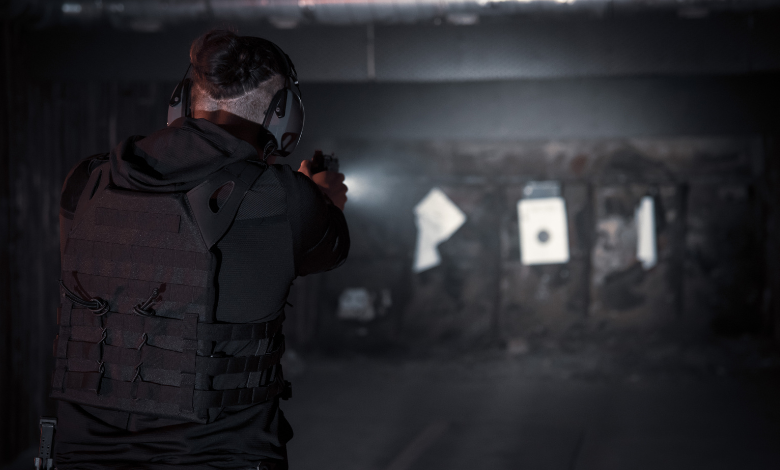Perceive Firearms Safeguard Measures Under Firearm Safety Course

While handling and operating firearms, safeguarding them is pre-eminent. It is all about responsible use, ensuring it is inaccessible to unauthorized individuals, especially children and those unfamiliar with firearm handling. You can’t learn these qualities and responsibilities on your own; for all this, you require training from professionals. To become a pro-shooter while operating a firearm with precautions, register your name for the Canadian Firearm Safety Course. It is equally important to handle the firearm from beginning to end. This guide helps to safeguard firearms before, during, and after use.
Approaches Towards Firearm When Not In Shooting Range
Protecting firearms is a vital aspect covered in the firearm safety course. Here are some key points about what approach you should adopt when you are not at the shooting range.
1. Securing Firearm Harmlessly
When firearms come into the hands of those who are not aware of their operation, it becomes risky for you and your surroundings so weapons should be kept unloaded in a safe location like a gun safe or locked cabinet that ensures inaccessibility to untrained individuals.
2. Make Use Of Safety Gear
Develop the habit of using safety gear like trigger locks, and chamber locks that prevent accidental discharge and unauthorized operation.
3. Keep Ammunition separate
Store Ammunition solely from firearms to provide extra protection that reduces the risks of accidental firing.
By sticking to this approach, individuals ensure firearm safety when they are not at the firing range, promoting safety and authoritative firearm ownership.
Precautionary Measures When You Are At Shooting Range
Though you are operating a firearm for the first time, don’t get too excited about using it. When you are at the firing range, it is necessary to follow precautionary steps for your safety and others. For the beginner or pro-shooter, it is crucial to implement the following steps at the time of shooting in firing range.
Observe Range Rules-
Observe the range of rules and regulations that are given by the professionals in firearm safety course. Get a thorough knowledge of range procedures, commands, and safety protocols before shooting.
Protective Gear Usage-
It is necessary to protect sense organs from unexpected injury while firing. Cover your eyes and ears with protective gear like goggles and earmuffs for prevention against debris, shooting noise, and potential backfire.
Safe firearm practice-
Treat your firearm as loaded. Until you are ready to shoot, develop a habit of keeping your muzzle point down at all times and fingers off the trigger.
Adopt Controlled Shooting-
Be attentive and maintain control over your firearm. Avoid shooting when you are under the influence of alcohol and drugs that harm you and your surroundings. For your safety purposes and the surroundings don’t operate or handle a firearm carelessly.
By constantly practicing these precautionary steps, shooters contribute to safe shooting and enjoyable experiences for themselves and others at the range.
Safeguard The Firearm After Shooting
To maintain the functionality of the firearm, it is important to adopt after-shooting safeguarding measures that prohibit access to untrained people and ensure safety. Here are the steps to take:
Inspect The firearm
After shooting and unloading the firearm, check twice whether the firearm should unloaded or not. Remove the remaining ammunition from the chamber and magazine if you find it.
Point Muzzle In Safe Direction
Point the firearm muzzle in a safe direction, away from people and property, even if it is unloaded.
Conveyance-
Once the shooting is over, when it comes to transporting the firearm, make sure it is unloaded and secured in the firearm case for safer transportation.
Implement Additional Measures For Extra Safeness
With additional safety measures, you become responsible for firearm ownership. Here are those steps:
Education And Training
Continuous education and training in firearms are crucial aspects. This includes an understanding of updated local laws and regulations regarding proper storage and transportation.
Responsibility Is Must
Be responsible during the entire shooting time. Responsibility is a must, even when you are not operating a firearm beyond shooting range. Owners should be responsible for ensuring firearms do not fall into the wrong hands. This involves being aware of who is accessible to firearms at all times.
Timely Maintenance
Inspect and maintain firearms regularly to ensure they function safely and correctly. Clean the firearm after the shooting. Grease the firearm with oil or kerosene for better functionality.
The above-mentioned standards are thoroughly taught at firearm academies, and it is essential to be equipped with precautionary measures whether you are a beginner or an expert in shooting. Looking for a reliable firearm academy that makes you learn these things and will make you a skilled shooter? Reach out to the GTA Firearm Academy and be admitted into the firearm course.

